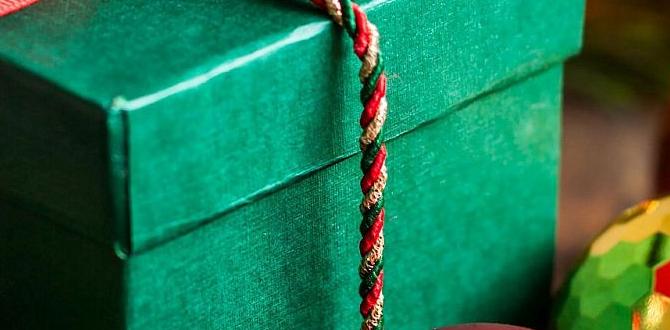Composting Dos and Don’ts: Proven Essentials for a Greener Garden
Transforming kitchen scraps and yard waste into nutrient-rich compost is surprisingly simple! This guide breaks down exactly what to add and what to avoid, ensuring your compost pile thrives and benefits your garden beautifully. Get ready to create your own ‘black gold’ with confidence!
Composting Dos and Don’ts: Proven Essentials for a Thriving Garden
Welcome, fellow garden enthusiasts, to the wonderful world of composting! If you’ve ever looked at your kitchen scraps or garden trimmings and thought, “There must be a better way than throwing this away,” you’re in the right place. Composting is nature’s way of recycling, turning waste into a gardener’s treasure: lush, nutrient-rich compost. It’s like magic for your soil, making plants happier and healthier. But like any good recipe, there are a few key ingredients and steps that make all the difference. Don’t worry if you’re new to this; we’ll walk through the essentials so you can start composting like a pro, avoiding common pitfalls and creating the best ‘black gold’ for your garden.
Why Compost? The Amazing Benefits
Before we dive into the “dos” and “don’ts,” let’s chat about why composting is such a game-changer. It’s more than just reducing landfill waste; it’s about actively improving your growing space. Compost acts like a superfood for your soil. It:
- Improves soil structure, making it easier for roots to grow and water to drain.
- Adds essential nutrients that feed your plants.
- Increases the soil’s ability to hold moisture, meaning less watering for you!
- Suppresses plant diseases and pests naturally.
- Reduces the need for synthetic fertilizers, which is great for the environment and your wallet.
- Helps to break down and remove dangerous contaminants from soil, according to the U.S. Environmental Protection Agency (EPA).
Ready to get your hands a little dirty and make a big difference? Let’s get composting!
The ‘Greens’ and ‘Browns’ Explained: Your Composting Recipe
The secret to a successful compost pile lies in balancing two types of materials: ‘Greens’ and ‘Browns. Think of it like a balanced diet for your compost organisms!
What Are ‘Greens’?
Greens are materials that are rich in nitrogen. They tend to be moist and break down quickly, providing the essential ‘fuel’ for the microorganisms that do the composting work.
Examples of ‘Greens’:
- Fruit and vegetable scraps (peels, cores, rinds)
- Coffee grounds and tea bags
- Grass clippings (use in thin layers to avoid matting)
- Plant trimmings (non-diseased)
- Manure from herbivores (cow, horse, chicken, rabbit – avoid pet waste)
- Seaweed
What Are ‘Browns’?
Browns are materials that are rich in carbon. They provide the energy source for the microorganisms and help to create air pockets in your compost pile, preventing it from becoming a soggy, smelly mess.
Examples of ‘Browns’:
- Dried leaves
- Straw and hay
- Shredded newspaper and cardboard (avoid glossy or colored inks)
- Wood chips and sawdust (use sparingly, especially from treated wood)
- Twigs and small branches
- Eggshells (crushed)
- Pine needles (use in moderation as they can be acidic)
A good rule of thumb for balancing greens and browns is to aim for a ratio of roughly 2 parts Browns to 1 part Greens by volume. This isn’t an exact science, and you’ll learn to adjust as you go, but it’s a great starting point.
Composting Dos: What to Absolutely Add!
Here’s your go-to list of materials that will help your compost pile become a powerhouse of organic goodness. When in doubt, these are your safe bets!
Essential ‘Do’ Items for Your Compost Bin:
- Fruit and Vegetable Scraps: The cornerstone of kitchen compost! Think apple cores, banana peels, carrot tops.
- Coffee Grounds and Filters: A fantastic source of nitrogen.
- Tea Bags: Remove any staples or plastic tags.
- Yard Waste: Dead leaves, unsprayed grass clippings (in moderation), small twigs, and plant trimmings.
- Eggshells: Rinse and crush them to help them break down faster.
- Paper Products: Plain newspaper (black and white ink is fine), plain cardboard (shredded or torn), paper towel rolls.
- Hair and Fur: From pets or humans.
- Soiled Paper Napkins and Towels: If they’re not greasy.
- Wood Ash: From untreated wood (use sparingly).
- Weeds (Non-Seeding): Be careful with perennial weeds that can regrow from root fragments. Hot compost piles usually kill these, but cold piles might not.
- Sawdust and Wood Shavings: From untreated lumber, used in small amounts.
Remember to chop or shred larger items to speed up the decomposition process. The smaller the pieces, the faster they’ll break down!
Composting Don’ts: What to Keep Out!
Just as important as knowing what to add is knowing what to avoid. Certain items can hinder your composting efforts, attract pests, or introduce harmful pathogens into your compost. Let’s cover the common mistakes to steer clear of.
What NOT to Put in Your Compost Bin:
- Meat, Fish, and Bones: These can attract pests like rodents and create foul odors.
- Dairy Products: Similar to meat, these can attract pests and go rancid.
- Oily or Greasy Foods: These can slow down decomposition and create unpleasant smells and anaerobic conditions (lack of air).
- Diseased Plants: You risk spreading diseases to your garden if the compost doesn’t get hot enough to kill them.
- Perennial Weeds and Invasive Plants: If they have mature seeds or strong root systems, they might survive the composting process and spread when you use the compost.
- Pet Waste (Dog and Cat Feces): These can contain harmful pathogens that may not be killed in a home compost pile.
- Coal or Charcoal Ash: Can contain sulfur and iron in amounts that can harm your plants.
- Glossy or Colored Paper/Cardboard: Inks and coatings can contain chemicals or heavy metals.
- Chemically Treated Wood Products: Including sawdust from pressure-treated lumber.
- Large Branches: These take too long to break down. Chop them into smaller pieces.
By avoiding these items, you’re helping your compost mature properly and ensuring it’s safe and beneficial for your garden.
Composting Methods: Choosing Your Approach
There are several ways to compost, each with its own pros and cons. The best method for you depends on your space, how much time you have, and how quickly you want compost.
1. The Open Pile (Cold Composting)
This is the simplest method. You just start piling organic materials in a designated spot in your yard. It’s low-effort but slow, often taking a year or more to yield finished compost. It’s great for yard waste but less ideal for kitchen scraps due to pest attraction.
2. The Contained Bin (Hot or Cold Composting)
This involves using a pre-made or DIY bin. The container helps retain heat, moisture, and deter pests. You can manage it as a “hot” or “cold” compost system. For faster results, you need to actively manage moisture, aeration, and the green/brown ratio.
3. Tumbler Composter
These are rotating barrels that make turning the compost easy. Turning is crucial for aeration and speeding up decomposition. They can produce compost relatively quickly (a few months) but are typically smaller in capacity and can be pricier.
4. Worm Composting (Vermicomposting)
This method uses specific types of worms (like red wigglers) to break down kitchen scraps in a contained system. It’s perfect for apartment dwellers or those with limited outdoor space and produces a nutrient-rich compost called “worm castings.” You can learn more about setting up a worm composting system at Planet Natural. Worms are delicate and don’t like the same materials as a hot compost pile. They are happiest with fruit and vegetable scraps, coffee grounds, and shredded paper.
Key Composting Techniques: Achieving ‘Black Gold’
Whether you’re using an open pile, a bin, or a tumbler, a few techniques will ensure your compost turns into that prized ‘black gold’ – dark, crumbly, and smelling of fresh earth.
1. Size Matters: Chop It Up!
The smaller the pieces of organic matter, the more surface area is exposed to the microbes that break things down. So, chop up those large vegetable scraps, shred your paper and cardboard, and break down twigs.
2. Moisture: Not Too Wet, Not Too Dry
Your compost pile should feel like a wrung-out sponge – moist but not dripping. If it’s too dry, decomposition slows to a crawl. If it’s too wet, it can become anaerobic, leading to foul odors and slimy conditions. If it’s too dry, add water. If it’s too wet, add more ‘brown’ materials like shredded cardboard or dry leaves to absorb excess moisture.
3. Aeration: Give It Air!
Composting microbes need oxygen to thrive. Turning your compost pile regularly (every few weeks for a cold pile, more often for a hot pile) will introduce air. If you have a bin, you might see aeration holes. For open piles, simply fork or shovel the material to turn it. Tumbler composters are designed for easy turning.
4. Temperature: The Hot vs. Cold Debate
- Hot Composting: This method aims to heat the compost pile up to 130-160°F (54-71°C). At these temperatures, decomposition is rapid (weeks to months), and potentially harmful pathogens and weed seeds are killed. It requires a good balance of greens and browns, sufficient moisture, and regular turning.
- Cold Composting: This is the low-effort, slow-and-steady approach. You simply add materials as you have them, and nature takes its course. It can take a year or more to get finished compost, and it may not kill weed seeds or pathogens. It’s often best for yard waste only.
Troubleshooting Common Composting Problems
Even with the best intentions, sometimes things go awry. Here’s how to fix common composting conundrums:
Problem: My compost pile smells bad (like rotten eggs or ammonia).
- Why it happens: Too many ‘greens’ or the pile is too wet, leading to anaerobic conditions.
- Solution: Bury new ‘greens’ within the pile. Add more ‘browns’ (shredded cardboard, dry leaves) to absorb moisture and improve airflow. Turn the pile to aerate it.
Problem: My compost pile is not breaking down and seems dry.
- Why it happens: Too many ‘browns’, not enough moisture, or the pieces are too large.
- Solution: Add more ‘greens’ or moist materials. Sprinkle with water until it feels like a wrung-out sponge. Chop larger materials into smaller pieces.
Problem: There are flies or other Pests in my compost bin.
<ul
Problem: My compost is taking forever to break down.
- Why it happens: Pile is too small, lacks moisture, isn’t turned enough, or has too many ‘browns’.
- Solution: Ensure your pile is at least 3x3x3 feet (if it’s an open pile) to generate enough heat. Add water and ‘greens.‘ Turn it more frequently. Chop materials smaller.
Composting Tools to Make the Job Easier
While you can compost with just a pitchfork and your hands, a few tools can make the process more efficient and enjoyable.
Essential Composting Tools:
- Pitchfork or Compost Aerator: For turning the pile and loosening compacted material.
- Shovel: For moving compost and managing pile layers.
- Gloves: To keep your hands clean.
- Watering Can or Hose: For maintaining moisture levels.
- Kitchen Compost Caddy: A small bin to collect kitchen scraps before taking them to the main compost pile.
- Shredder (Optional): For quickly breaking down leaves, paper, and small twigs.
You can find quality gardening tools at most local garden centers or online retailers focusing on earth-friendly options.
Composting vs. Mulching: What’s the Difference?
It’s easy to get these two beneficial gardening practices confused! While both involve organic matter and are great for your garden, they serve different purposes and involve different processes.
| Feature | Composting | Mulching |
|---|---|---|
| Process | Decomposition of organic matter into nutrient-rich soil amendment. | Layering organic or inorganic material on the soil surface. |
| Goal | Create a soil conditioner to improve soil structure and fertility. | Conserve soil moisture, suppress weeds, regulate soil temperature, and improve aesthetics. |
| Application | Mixed into soil before planting or spread on top of soil around plants. | Spread on the soil surface around plants, leaving a small gap around the stem. |
| Materials Used | Greens (nitrogen-rich) and Browns (carbon-rich) in balanced layers. | Wood chips, straw, shredded bark, leaves, compost, gravel, plastic sheeting. |
| Timeframe | Weeks to over a year, depending on method. | Immediate effect; materials need replenishing over time. |
Think of compost as food for your soil, and mulch as a protective blanket for your soil and plants. Both are vital for a healthy garden!
Frequently Asked Questions About Composting
Here are answers to some common questions beginners have:
Q1: How do I know when my compost is ready?
A1: Finished compost, often called ‘black gold,’ will be dark brown or black, crumbly, and smell earthy and pleasant. You shouldn’t be able to recognize the original materials you put in. It will also have cooled down after the initial heating phase.
Q2: Can I compost in the winter?
A2: Yes, you can! Composting slows down significantly in cold weather, but it doesn’t stop entirely, especially if you have a well-insulated pile or bin. You can continue adding materials, and if you have a hot composting system, you might need to turn it less often. Some people even pile snow on top to insulate it.
Q3: How big does my compost pile need to be?
A3: For effective hot composting, a pile that is at least 3 feet wide, 3 feet deep, and 3 feet high (a cubic yard) is ideal for retaining heat. Smaller piles will still compost, but likely at a much slower, colder rate. For worm composting, a small bin is sufficient.
Q4: What’s the difference between composting and vermicomposting?
A4: Composting generally refers to the decomposition of organic matter by a diverse range of microbes, fungi, and larger organisms in a compost pile or bin, often involving heat. Vermicomposting specifically uses worms (like red wigglers) to break down food scraps in a more controlled, cooler environment, producing worm castings.
Q5: Can I compost grass clippings?
A5: Yes, but in moderation! Grass clippings are a great ‘green’ material, providing nitrogen. However, adding too




